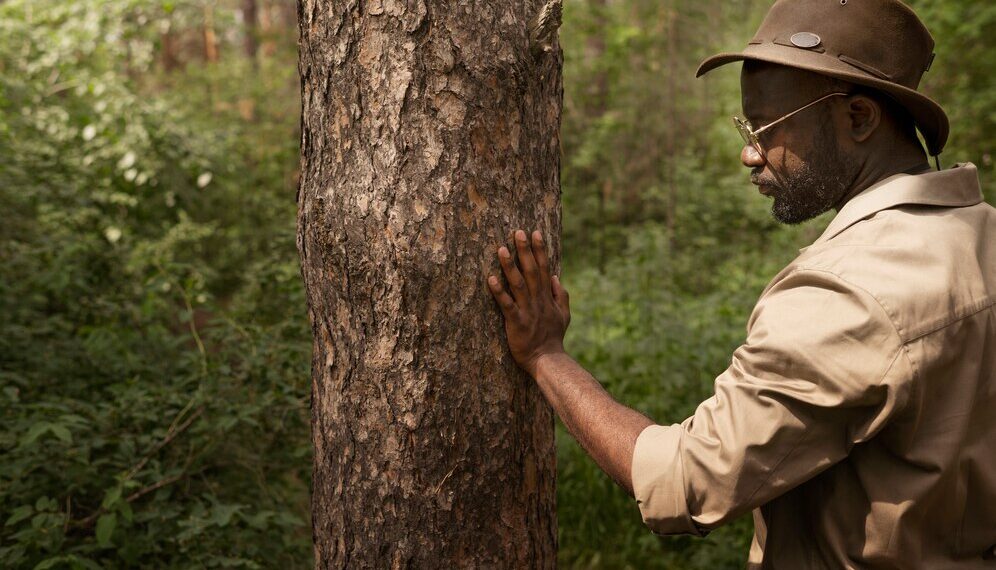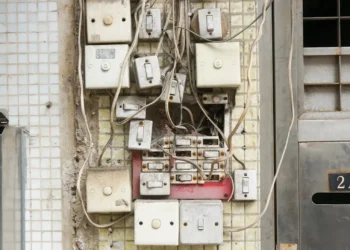You may have found removing smaller trees and shrubbery on your property a breeze. However, you should put the urge to tackle large tree removals to rest. Although cost savings with DIY tree cutting may entice you, the risk of injury and death isn’t worth the hassle.
If you’re wondering how to remove a large tree from your property, you should know about the safety risks arborists face while completing the task. The process may be more complicated than you anticipated.
Safety Hazards of Large Tree Removal
A lot can go wrong during large tree removal. In 2022, the Bureau of Labor Statistics reported 222 workplace fatalities among professional arborists, trimmers and landscapers. The injury and death tolls even prompted OSHA to launch a new safety program in the Northeast U.S., Puerto Rico and the U.S. Virgin Islands.
Among the more life-threatening situations related to tree removal include:
- Falling from trees, ladders, rooftops and aerial lifts at high elevations.
- Being struck by heavy equipment, limbs and branches.
- Amputations from chainsaws, chippers and grinders.
- Electrocutions from power tools, power lines or transformers.
If professionals are at risk of such significant injuries, someone without the proper training and experience would put themselves in an even more precarious position.
How to Remove a Large Tree
Large tree removal is a complex process from start to finish. Arborists undergo significant training to be successful at what they do. Here are six steps they take to cut down large trees.
Plan and Obtain Permitting
A professional tree trimmer knows how to properly examine a tree for removal, including the species and health and safety risks. They also know their surroundings and potential hazards, such as power lines and nearby structures. Unless you have a background in arborist practices, you may overlook important details.
From there, obtaining the proper permits to remove large trees from your land is crucial. Your town may issue you a hefty fine if you cut them down without permission.
Prepare the Area
Once a removal plan is established, the tree’s surroundings must be prepared, clearing the land of natural debris and inanimate objects.
The tree trimmer must also locate and mark the ground wherever utilities and preserved habitats exist. Otherwise, they risk disrupting power for nearby residents or ruining precious ecosystems.
Fell the Tree
Felling is the most dangerous part of large tree removal. A specialized crew will make several precise cuts in the tree using chainsaws and other heavy equipment, ensuring they control how it falls.
The arborist will likely use a tracked lift to reach higher up the tree trunk. Tracked lifts allow trimmers to conduct work in hard-to-reach or tight areas with little disruption to the surrounding environment, including lawns.
Debranch Limbs
Once the tree is on the ground, trimmers will use chainsaws to remove the branches and limbs — this is called debranching. Some trimmers remove the branches before felling, but this isn’t sufficient if the tree will be processed for timber.
Cutting the branches makes it easier to remove them from the property and transport them on trucks. An arborist may also separate the limbs by the quality of the wood.
Buck the Trunk
Bucking is the process of cutting the trunk into manageable pieces for removal. Typically, tree trimmers cut the trunk into the length of logs to simplify processing.
Although you may decide to send the tree parts away with the arborist, people living in colder climates may want to keep the pieces for firewood in the wintertime.
Grind the Stump
Grinding the stump is optional. However, removing it is a good idea if you want to prevent the tree from sprouting again.
Only trained professionals should manage the grinding equipment as it can be rather dangerous for inexperienced DIYers. Overall, large tree removal requires multiple, complex steps, which is why you should call someone to do it for you.
How Much Does Professional Tree Removal Cost?
Most homeowners pay around $1,100 to remove a tree from their yard. However, prices range between $200-$2,000 depending on where you live, the hardness of the wood and its size. The tree species might also indicate how expensive the service is.
You can call a removal company to measure the tree for an exact quote. Typically, most professional trimmers consider any tree over 60 feet tall, while 30 feet or under is small — anything in between is medium-sized. Large trees could cost you about $15 per foot to remove.
Some Projects Are Better Left to the Pros
Before you rent heavy equipment and buy a chainsaw, reconsider your approach to removing large trees from your property. A much safer option than DIY is to call a professional trimming service to do the job for you. While you’ll have to pay more for labor, it’s better than having a heightened risk of injury and death.









